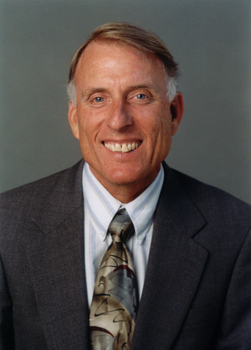
It’s a mouthful – a nose full, too.
Chronic rhinosinusitis (CRS), a common and often debilitating form of sinus inflammation, affects an estimated eight to 10 percent of the American population each year. That’s one reason a group of researchers at Northwestern University Feinberg School of Medicine has steadfastly studied the condition for nearly a decade.
The “sinus center” – an unofficial consortium of 20-25 ear, nose, and throat (ENT) surgeons, allergists, post-docs, medical students, residents, and research faculty – provides the framework for discussion.
“We meet weekly about 85 percent of the time and all types of discussions seem to come up,” said Robert Schleimer, PhD, chief of allergy-immunology. “Typically, someone will present their research; it could be an ENT resident or PhD postdoc from allergy, and we will all constructively discuss it.”
Focused largely on CRS, the sinus center is a breeding ground for new ideas and the backbone of a recently-submitted $9 million grant proposal to the National Institutes of Health (NIH).
“Despite the fact that this is an extremely common disease, this collaboration is unique; there is really nowhere else in the country that rivals what we are doing here, and that creates opportunities for us to do some really important work,” said Schleimer, Roy and Elaine Patterson Professor of Medicine. “I view CRS as the biggest orphan disease we have because it’s largely ignored. Pharmaceutical companies and NIH study sections are not that interested in it and yet there are possibly 30 million people with this disease in the U.S. who are left to deal with a tremendous amount of suffering.”
Resulting in 400,000 to 500,000 surgeries annually, treatment costs for CRS are estimated at $6-8 billion. It’s also cited as one of the largest causes of inappropriate antibiotic use and the emergence of antibiotic resistant organisms because it remains largely misunderstood.
Together with Robert Kern, MD, chair of otolaryngology-head and neck surgery, Bruce Tan, MD, assistant professor of otolaryngology-head and neck surgery, and Atsushi Kato, PhD, assistant professor in allergy-immunology, Schleimer has established not only a fertile talking ground when it comes to CRS, but an enriched research environment as well.

“The way it is set up is for someone to have a very satisfying research experience here,” Kern said. “We foster that interest in research and make people critical thinkers who more readily become lifelong learners because they’re more pro-active and can critically evaluate the literature. Young otolaryngologists and allergists being trained in research begets the next generation.”
Primarily through efforts of engagement, doctors are collecting sample sets from patients undergoing surgery during the natural course of their treatment. Beyond cell samples, these often include nasal polyps, sac-like growths of inflamed tissue, and the surrounding matter, which make the best controls for investigation.
As these samples arrive at the lab, Kato has worked to organize a system for basic research, the result of which is rigidly validated protocols and the dissemination of usable subsets.
“That means that a resident in medicine who has a two or three month research rotation can walk through the door and we can hand them 15 controls, 15 polypoid CRS cases, 15 non-polypoid CRS cases, and an assay kit and tell them to run them and see what they find. In a short period of time, a few months, a resident or fellow in medicine, allergy, or ENT can develop a beautiful project. It’s very attractive to medical students, residents, and fellows because they can get meaningful papers in journals very quickly.”
In trying to create an environment that will support NIH grants and the publishing of papers in the highest impact journals, the sinus center has begun collaborating with world-class geneticists at the University of Chicago and world-class epidemiologists at Johns Hopkins University and the Geisinger Health System, melding the expertise of each group to move CRS research forward.
Instead of looking for the causes of CRS, the group at Feinberg is taking an “inside-out approach,” studying what is happening inside the body when it forms a nasal polyp, or when the immune system decides to inflame the entire nasal passage.
By looking at the cellular and molecular pathways and the pathogenesis in terms of tissue changes, Schleimer has seen an overflow of ideas and interest from students.
“If we succeed, there will be a cohort of six to eight highly successful NIH-funded young investigators who will be mentors to the next generation at Feinberg,” he said. “We can’t do it all, but if we get enough junior faculty devoted to sinus disease – that means they have to succeed and get grants and we have to help them to that level –they can be proper mentors to the next generation and carry this thing forward.”






